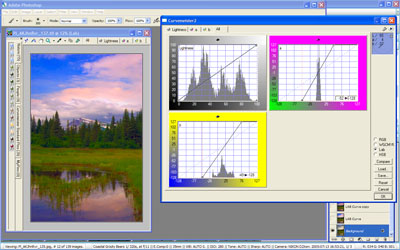- Photo Safaris
- Alaska Bears & Puffins World's best Alaskan Coastal Brown Bear photo experience. Small group size, idyllic location, deluxe lodging, and Puffins!
- Participant Guestbook & Testimonials Candid Feedback from our participants over the years from our photo safaris, tours and workshops. We don't think there is any better way to evaluate a possible trip or workshop than to find out what others thought.
- Custom Photo Tours, Safaris and Personal Instruction Over the years we've found that many of our clients & friends want to participate in one of our trips but the dates we've scheduled just don't work for them or they'd like a customized trip for their family or friends.
- Myanmar (Burma) Photo Tour Myanmar (Burma) Photo Tour December 2017 -- with Angkor Wat option
- Reviews Go hands-on
- Camera Reviews Hands-on with our favorite cameras
- Lens reviews Lenses tested
- Photo Accessories Reviews Reviews of useful Photo and Camera Accessories of interest to our readers
- Useful Tools & Gadgets Handy tools and gadgets we've found useful or essential in our work and want to share with you.
- What's In My Camera Bag The gear David Cardinal shoots with in the field and recommends, including bags and tools, and why
- Articles About photography
- Getting Started Some photography basics
- Travel photography lesson 1: Learning your camera Top skills you should learn before heading off on a trip
- Choosing a Colorspace Picking the right colorspace is essential for a proper workflow. We walk you through your options.
- Understanding Dynamic Range Understanding Dynamic Range
- Landscape Photography Tips from Yosemite Landscape Photography, It's All About Contrast
- Introduction to Shooting Raw Introduction to Raw Files and Raw Conversion by Dave Ryan
- Using Curves by Mike Russell Using Curves
- Copyright Registration Made Easy Copyright Registration Made Easy
- Guide to Image Resizing A Photographers' Guide to Image Resizing
- CCD Cleaning by Moose Peterson CCD Cleaning by Moose Peterson
- Profiling Your Printer Profiling Your Printer
- White Balance by Moose Peterson White Balance -- Are You RGB Savvy by Moose Peterson
- Photo Tips and Techniques Quick tips and pro tricks and techniques to rapidly improve your photography
- News Photo industry and related news and reviews from around the Internet, including from dpreview and CNET
- Getting Started Some photography basics
- Resources On the web
- My Camera Bag--What I Shoot With and Why The photo gear, travel equipment, clothing, bags and accessories that I shoot with and use and why.
- Datacolor Experts Blog Color gurus, including our own David Cardinal
- Amazon Affiliate Purchases made through this link help support our site and cost you absolutely nothing. Give it a try!
- Forums User to user
- Think Tank Photo Bags Intelligently designed photo bags that I love & rely on!
- Rent Lenses & Cameras Borrowlenses does a great job of providing timely services at a great price.
- Travel Insurance With the high cost of trips and possibility of medical issues abroad trip insurance is a must for peace of mind for overseas trips in particular.
- Moose Peterson's Site There isn't much that Moose doesn't know about nature and wildlife photography. You can't learn from anyone better.
- Journeys Unforgettable Africa Journeys Unforgettable -- Awesome African safari organizers. Let them know we sent you!
- Agoda International discounted hotel booking through Agoda
- Cardinal Photo Products on Zazzle A fun selection of great gift products made from a few of our favorite images.
- David Tobie's Gallery Innovative & creative art from the guy who knows more about color than nearly anyone else
- Galleries Our favorite images
DPS 4-5: Supercharging Photoshop with LAB & Curvemeister + Hot New Product Announcements
DigitalPro Shooter Volume 4, Issue 5, January 31, 2006 Are you ready to take your color correction & color enhancement tools to the next level? In this issue we'll follow up on our introduction to the LAB color space with some tips on how to get the most out of your images with LAB by using Curves and Curvemeister. Also, we're pleased to announce that our African photo safaris for 2006 are ready for sign-up. They are the best digital photo trips you can find for African wildlife and will be a lot of fun. We'll also give you a heads up on some hot new products including a great new value in printer profiling solutions, a slick GPS for your camera and Nikon's new Macro flash system.
Taming LAB with CurvemeisterAs powerful as LAB is, using it does have one big problem--it creates a painful workflow because you need to convert to LAB, do your corrections, and then (typically after flattening) convert back to RGB (or to CMYK). Layers and their intent are lost and you spend a lot of time converting back and forth. Fortunately, after having written about this problem one of our readers, Mike Russell, the genius behind a very cool tool called CurveMeister, contacted me and explained that with CurveMeister you can use LAB curves right from RGB in Photoshop. This is incredibly helpful and saves tons of time.. Curveveister saves as much as minutes per image just because of this one feature. But it is packed full with lots of other productivity enhancements that make Curves--the most powerful command in Photoshop--much easier and faster to use. First, it offers a great large preview screen of your changes, which you can easily set to any channel. Second, it color codes the curves dialogs so that (for example) you can easily remember which end of the a & b channels are red, green, yellow or blue. Third, it provides a much larger and nicer window for actually manipulating the curves. Fourth, it has the ability to use or create "pushpins" which are memorized colors. Assigning a push-pin to a place in a photo pins that spot to a particular color. Finally, it is chock ful of other settings such as history that allow you to take Curves way beyond what is possible with Photoshop.
Part of my enthusiam for Curvemeister is necessity. I'm in the middle of creating a fairly large exhibition requiring over 40 large format prints. I want to have them all "match" so I've been reprocessing my existing TIFFs to maximize what I can get out of them and optimize them for the size and type of paper I'll be using. Of course this is a lot of work since I want to do each one by hand and check the results. The first thing I noticed is that for 2 out of 3 I could improve the color and the drama of the image using LAB. The second thing I realized is that it would take me days to do that fully manually. Curvemeister enables me to fairly quickly add a LAB curves layer to my existing images, preserving much of the rest of my work, and then quickly proceed to the final resizing, sharpening, and printing with ImagePrint. Quick Color Enhancement using Curvemeister & LABYou really need to read Dan's new book on using the LAB colorspace to get the most out of LAB, but just to give you a taste of what is possible here is one of my quick "cookbook" approaches to enhancing the color in a digital capture, based on advice in Dan's book:
Correction or Enhancement: Where is the line?Many discussions of photo-editing center on a debate about what changes are "permissible" to an image. Obviously a lot depends on the usage, but there is certainly some energy about determining which edits are "correcting" the image back to the "real scene" versus enhancing it beyond that. Frankly, the line is incredibly murky. Every person sees each scene differently, and the same is true for cameras. Working with our raw captures (whether they are film negatives or digital originals) is a time honored practice. The only difference is that we have increasingly powerful tools. The only guideline I have is a simple one: If you correct, edit or otherwise tweak an image until it looks "better" than the viewer imagines a "photograph" can, it will be judged in their mind as an artwork, rather than a pure photograph. That can set the bar quite high for how compelling it needs to be. But if you leave the image mostly alone then the viewer will tend to credit your photographic "craft" and think of the image as a photograph and judge it accordingly. So as you start to work on an image, think about what you want it to convey and who the audience is. Let me know your thoughts on this in our Digital Cafe forum. New Products
Special Guest: Mike Russell, author of Curvemeister has agreed to write an article for us on how to make the most out of Photoshop curves--and he knows as much about them as anyone. So look for it on nikondigital.org and in a future issue of DigitalPro Shooter. --David Cardinal, Editor, DigitalPro Shooter |
--David Cardinal, editor DigitalPro Shooter
- Log in to post comments





